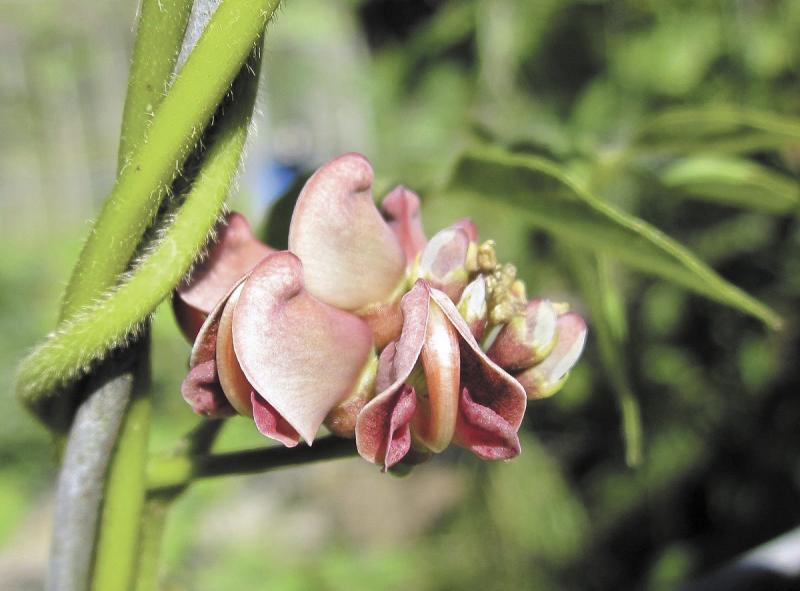In the 1950s, bodybuilders found out that they needed lots of extra protein in order to bulk up their muscles. A entrepreneur named Bob Hoffman introduced Hi-Proteen, arguably the first in what would become the multimillion-dollar protein supplement market.
Growing our own protein is always tough, as most vegetables have relatively little protein. But there is one uncommon food you can easily grow that has three times as much protein as potatoes. Native Americans ate foods unknown to Europeans, such as corn, squash and potatoes. Almost all of these food crops were quickly adopted and introduced around the world. All except one. This forgotten fellow is a tuber that was a vital part of the diets of eastern Native Americans from Canada to the Gulf coast, the groundnut (Apios americana). These tubers are extremely high in protein with a crude protein content of 16.5 percent, or about three times that of potatoes. In the wild, Apios americana grows along the edges of streams, ponds and near marshes, but it can be easily grown at home..
A member of the pea family, this perennial has edible tubers, and the flowers and beans are edible also. These are huge vines, climbing counter-clockwise and twisting around other plants or supports, eventually reaching up to 10 feet. They are legumes, so they fix nitrogen into the soil. The tubers can stay in the ground for a long time without rotting, so you can dig them over several weeks.
The groundnut plant blooms with long flower spikes, or racemes, of purple-pink flowers that resemble wisteria or snapdragons. These flowers bloom from July through September followed by edible pea pods two to five inches long. After you pick the groundnut pea pods, let the vines die from frost. After a few frosts, the tubers will be sweeter as they convert starch into sugar. You will harvest tubers from the size of your thumb to giants as big as baseballs. The tubers grow along the roots spaced like pearls on a string. You have to cook groundnuts before you can eat them. Peel and boil them as you would regular potatoes.
You can grow groundnuts from seeds or tubers. Both are available from online specialty merchants such as Sand Mountain Herbs.
Plant the small tubers whole. For best results, choose a spot with well-drained soil in full sun. These are strong vines that will need heavy supports like you would use for pole beans. Since they are legumes and fix nitrogen from the air into the soil, they usually don't need fertilizer. Keep them well watered but not soggy during the growing season.
If you use seeds, start them indoors in peat pots with a quick-draining soil mix. Once they have two sets of true leaves, pinch back to the first leaves. This will keep the young vines from twining on each other. Once your perennial groundnut vines are established, they pretty much take care of themselves. Just be sure the soil is never allowed to dry out. An organic mulch of straw or leaves will help retain moisture and decompose into compost.
Track down a good source for groundnuts now, and next spring you can plant the tubers and start your own high-protein empire.
























































